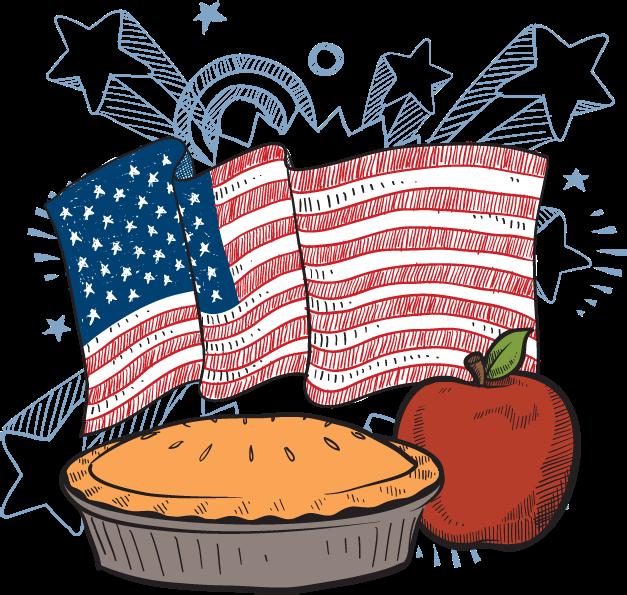
5 minute read
Veterans Chamber of Commerce
By Joseph Molina www.vccsd.org
Feel Better Foods
If you’re trying to lower your stress levels, you probably already know to start with the basics: self-care, better sleep, exercise, etc. But did you know that some foods lower stress levels, too? Dietitian Courtney Barth, MS, RDN, LD, CPT, explains how certain foods can help reduce levels of cortisol — the primary hormone responsible for stress.
The Role of Cortisol
Cortisol plays several roles in the body, including:
• Regulating sleep cycles
• Reducing inflammation
• Increasing blood sugar
• Managing how the body uses carbohydrates, fats, and proteins
• Controlling blood pressure
Notably, cortisol is sometimes known as the “stress hormone” because your adrenal gland releases it when you’re in a stressful situation or when your body is under physical stress. It’s the key to helping your body manage its fight-or-flight instinct. I found this video from Dr. Berg that explains it better and in more detail. https://www.youtube.com/watch?v=ii_OWTqn1rw
Foods that Reduce Stress Levels
One good way to lower cortisol in the body is to focus on an anti-inflammatory diet, which means fewer processed foods and more whole foods. The goal is to eat foods that reduce inflammation in your body, thus reducing cortisol levels.
Magnesium-Rich Foods
Magnesium is greatly beneficial when it comes to reducing inflammation, metabolizing cortisol, and relaxing the body and mind: Avocados, Bananas, Dark chocolate.
Gut-Healthy Foods
Seventy to 80 percent of our immune system is reliant on our gut, so if we correct our gut, we correct a lot of our immunity. These probiotic-rich and fermented foods can help balance blood sugar and reduce cholesterol, like Greek yogurt, for example.
In contrast, some foods raise cortisol levels, causing stress on the body. They include foods like alcohol, foods high in sugar and foods with simple carbs.
Weight Loss: Follow a Diet or Change a Lifestyle? Losing weight is on the minds of many people. It seems that there are thousands of opinions, diets, and recommendations out there. Well, here is a “summary” of what I found. One study found that some foods, including fruits, vegetables, nuts, whole grains, and yogurt, related to weight loss. In the same study, potato chips, sugary beverages, red meats, and processed meats were associated with weight gain. I found the topic of the Keto diet and Intermittent Fasting (IF) from Dr. Berg (LINK) — again, I found this to be informational and helpful in maintaining a wellbalanced eating lifestyle. I hope you enjoy the information.
Egg Whites or Bagel?
They found that men who had eaten the egg breakfast ate significantly less at their next meal, and in the following 24 hours, than those who had eaten the bagel breakfast. I have noticed this myself. Meals high in protein make me feel less hungry!
Dark Chocolate vs. Milk Chocolate
In one study, chocolate lovers who were given dark chocolate ate 15% less pizza a few hours later than those who had eaten milk chocolate.
Summary:
I hope you found the information useful, and of course, there is plenty more out there to learn and research. Let me know if you find something that will be useful to share with the Veteran Community.
Nominate a Hero:
The National Veterans Chamber Radio Show
• Would you like to share your story? Then, be our guest on the show — here is the REQUEST FORM. https://www.vccsd.org/radioshow.html
• If you have any ideas or a project that you would like to develop email us at veteransccsd@gmail.com
* Disclaimer: This is for informational purposes only and based solely on my personal experience. Make sure you contact a qualified Attorney to actually create living trust for your family.
What’s So American About Apple Pie?
The grill glows hot, the beer is on ice, and the fireworks are ready to burst. Fourth of July is a holiday celebrated through food. There’s potato salad, popsicles, watermelon slices — and, of course, apple pie. But this all-American dessert isn’t as homegrown as you’d think.
“When we say, ‘As American as apple pie,’ we think of baseball and hot dogs without ever considering not one ingredient in apple pie originates from what we call the United States,” says Libby O’Connell, author of The American Plate: A Culinary History in 100 Bites.

Pie for thought:
The recipe
The British used animal fat, wheat, and water to create airtight pastry shells with the un¬appetizing name of “coffyns.” These savories were usually stuffed with beef or venison. In America, the shells became flakier (like the strudels made by German immigrants) and the meat fillings were replaced with apples, a way to use up imperfect fruit.
Apples
The sweet, juicy fruit we use in pie isn’t native to North America, which specializes in crab apples. It originated in Kazakhstan. The Romans then crossed it with astringent apples used for making ¬cider. (True tidbit: Johnny “Appleseed” Chapman really did plant orchards around the United States.) Love apples? Here are some other healthy ways to eat apples you didn’t know about.
Wheat
First cultivated more than 9,000 years ago, ancient wheat has been found in Iraq, Iran, and throughout the Middle East. The “king of grains” spread through Europe and then to the New World, where it failed miserably, which is why colonists relied on a Native American staple for baking: corn. In the late 1800s, Russian immigrants brought a wheat variety known as Turkey Red, which was better suited to our climate.
Lard and Butter
Wild boars (the ancestors of lard-producing pigs) are native to Asia, Europe, and Africa. It was actually Christopher Columbus, on his second voyage to the New World in 1493, who brought pigs and cattle, the source of all things dairy.
Sugar and Spices
Columbus also played deliveryman for sugar, which originated about 4,000 years ago in Indonesia, India, China, and what is now Papua New Guinea.
Cinnamon comes from an evergreen tree native to Sri Lanka. (The prophet Moses and Rome’s emperor Nero are believed to have eaten it.) The variety most commonly found on super¬market shelves today is cassia cinnamon, which originated in southern China. Cloves and nutmeg, indigenous to the Banda Islands of Indonesia, were considered so precious that Ferdinand Magellan brought 50 tons of them back to Spain after he sailed around the world in 1522. Watch out for these foods that are surprisingly high in sugar.
Becoming an American “Original”
Once all the ingredients were in place, putting them together was as easy as—Well, it wasn’t so easy after all. Although the earliest apple pie recipes date to the 1300s, it took nearly 500 years for the dessert to hit it big in the United States. “During the Civil War, both Union and Confederate troops scavenged for apples and commandeered the hearths—and flour bins—of white farmers and black tenants to bake pies,” writes John T. Edge in Apple Pie: An American Story.
“Wartime adversity fixed the taste of apple pie on the palate of generations to come.” By 1902, an editorial in the New York Times proclaimed that pie had become “the American synonym for prosperity.” In the 1920s, the phrase as American as apple pie started to appear in print, and by World War II, soldiers declared that they were fighting “for mom and apple pie.” Apple pie—wholesome and comforting—had woven itself into the way we see our country.
Given apple pie’s strong associations with America, there’s perhaps some small irony that it is not necessarily a homegrown American product, but something baked overseas and brought to these shores. But if immigrants comprise a key component of the United States’ lifeblood, then there is perhaps no better symbol of America than the delicious dessert.










